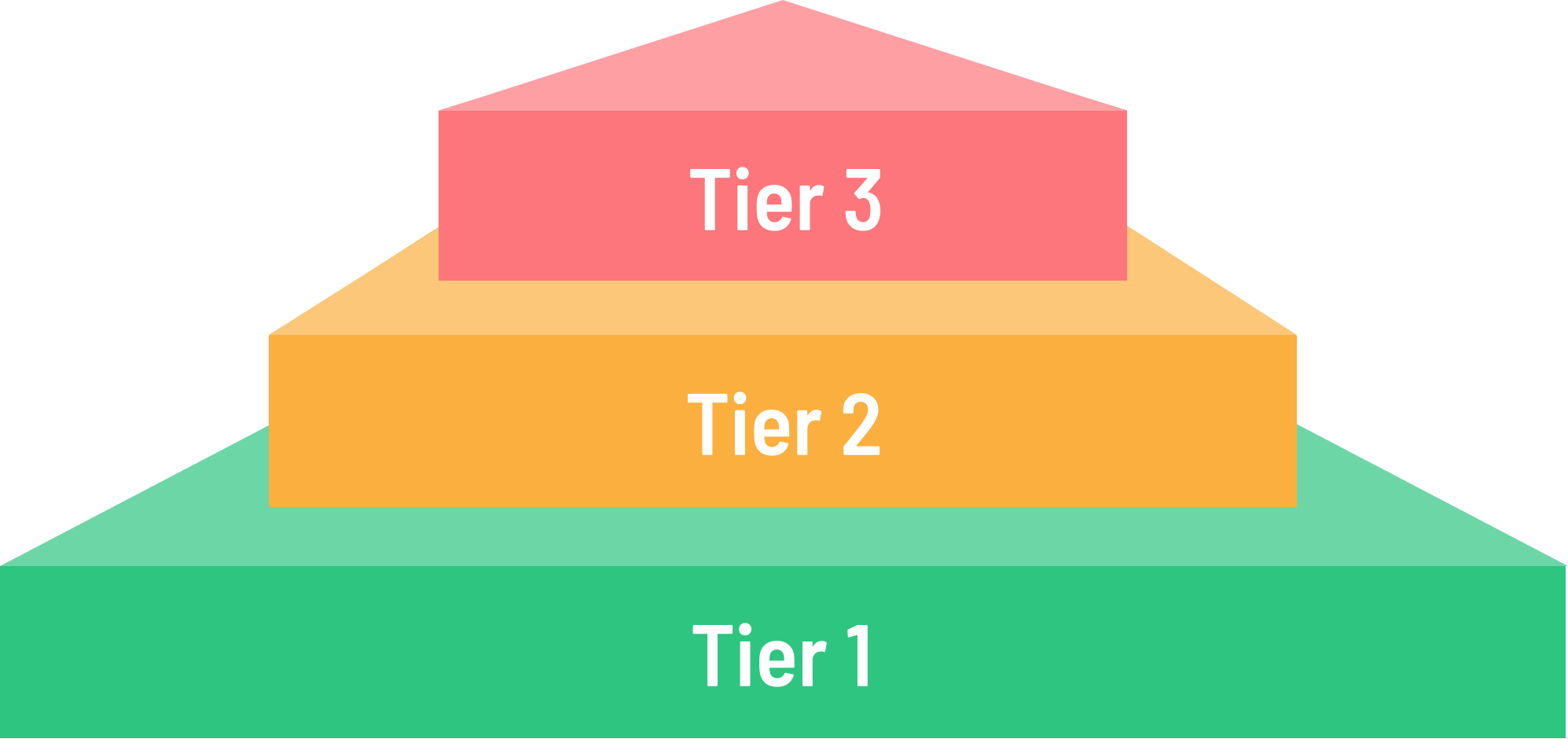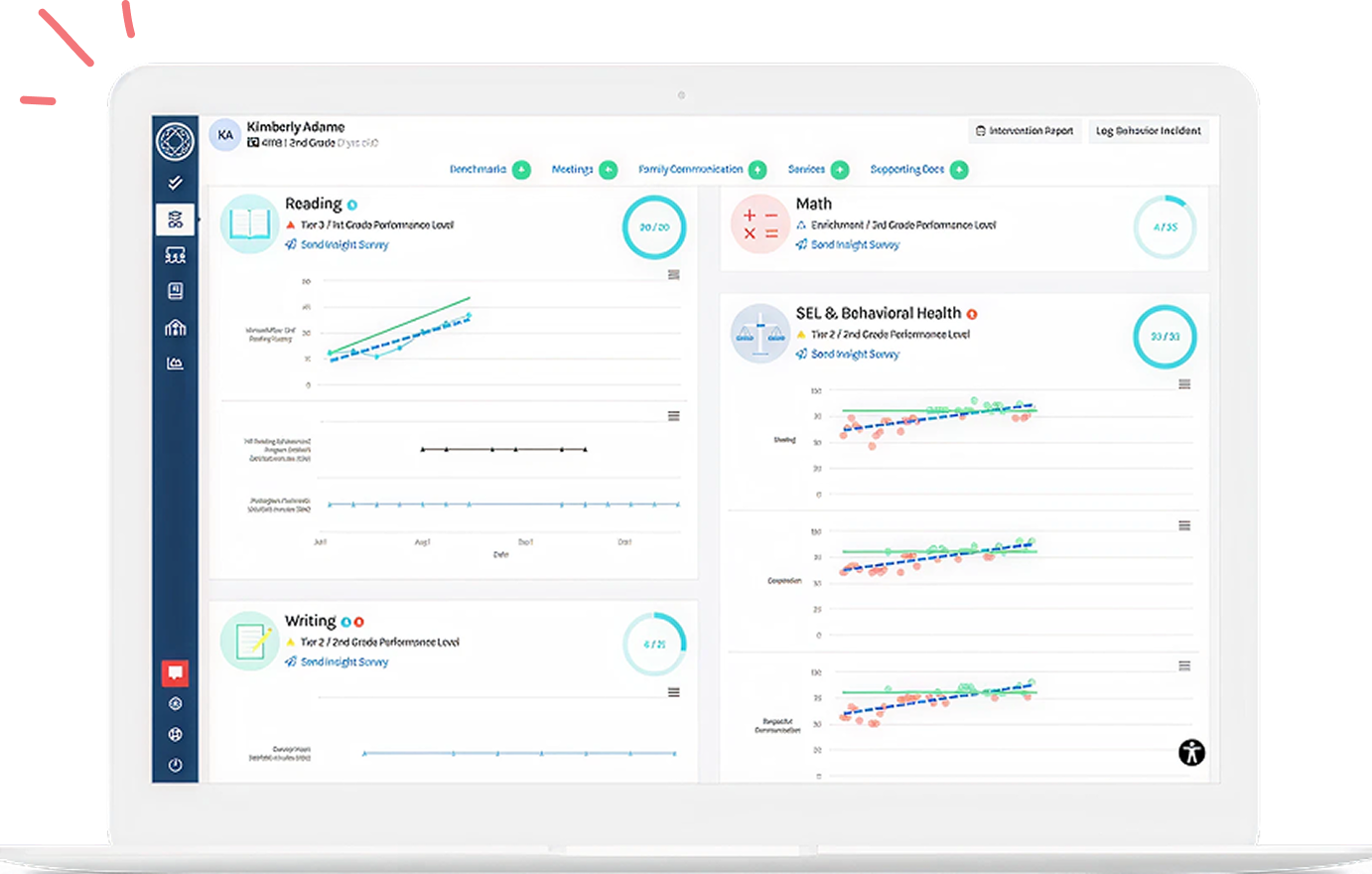As lifelong educators, my co-author and I have experienced a combined 50, yes 50 years in education! Spring semesters, planning, reviewing data, and targeting support before the final bell rings for summer. No matter what role we have held, including teacher, administrator, or instructional coach, our instinctual goal was to ensure at least one year’s growth for every student. But it's not so simple, is it? With the best intentions, our initial instinct is to group students to focus on remediating foundational skills, only to risk excluding them from grade-level content instruction.
Accelerating Tier 1 for Student Success: Key Takeaways
- Accelerate, don’t remediate. Keep students on grade level with just-in-time supports.
- Prioritize power standards. Focus on the skills that matter most.
- Strengthen Tier 1. Use scaffolds, progress monitoring, and behavior supports to boost access for all.
What if, instead of focusing on growth for every student (which potentially may be grade levels below), we focus on grade-level proficiency or bust for every student? Instead of focusing on identifying the gaps and moving backward to fill them, we accelerate our core instruction by strategically curating grade-level standards-based instruction. That way, the student can spend time and attention on identified targeted skills to prepare for upcoming learning. Student outcomes change when accelerated instruction replaces traditional remediation strategies alone.
With traditional remediation, students identified as needing additional support typically receive intervention for skill gaps that may have little or nothing to do with the current, on-grade material and/or instruction.
While it is certainly important to "backfill" for learning gaps, when that remediation is not closely aligned to what the student needs to succeed with current grade-level material, the student will only slip further behind. In contrast, acceleration provides immediate access to end-of-year expectations by strategically identifying prior years’ learning and learning gaps, AND providing just-in-time support along the way.
But, before jumping into how to accelerate, let’s answer… what exactly is differentiated core Tier 1 instruction, and what is acceleration?
What is Differentiated Core “Tier 1” Instruction?
Multi-Tiered System of Supports (MTSS) is a whole-school, prevention-based framework that relies on data-based problem-solving to support all students within a layered continuum of evidence-based practices and systems. MTSS, as a foundation, provides academic, behavioral, and social-emotional interventions organized into tiers (or levels) of support.
Core instruction consists of all curricular materials and strategies used routinely with all students in general education. During core instruction, also known as Tier 1 instruction, teachers provide differentiated strategies to meet the entire class's documented strengths and needs.

Download: The MTSS Guide to Core Instruction
3 Teacher Moves to Accelerate Your Core Instruction and Make Your Tier 1 More Effective
1. Prioritize Your Grade-Level Standards
As two former Professional Learning Community (PLC) coaches, we have had many discussions with grade-level PLCs regarding the misconception that all standards deserve equal attention. Teaching an inch deep and a mile wide or covering the curriculum has long been a topic of conversation.
The way to overcome this obstacle is to identify your “power standards” and then prioritize them. This thoughtful process helps educators develop a deeper connection and understanding of their teaching standards. In addition, through the selection and explicit teaching of power standards, you will gain additional time to target specific supports on skills that have a larger impact on student learning and progress.
The term “power standards” was coined by lifelong educator, Larry Ainsworth. He states that power standards meet the following criteria:
-
Learning Endurance: Does the standard offer skills or learning beyond one test on grade level? Is it essential beyond this unit, and can it be applied later in life? Examples such as learning to read or learning to use a map may come to mind, as they are skills that have endurance and will be used throughout life.
-
Learning Leverage: Is this standard relevant across other disciplines? When a standard has skills that apply in other content areas, it has leverage. An example of a skill that has leverage or holds weight in different contexts is learning to analyze data or engage in persuasive writing, as these are skills relevant in many disciplines.
-
Learning Readiness: Does this standard provide students with the tools and skills they need for the next unit, course of study, or grade level? When a standard has a skill the student needs in upcoming learning, it has “learning readiness.”
2. Utilize High-Impact Strategies to Accelerate Core Instruction
If we wait for deficits to present themselves on assessments, our students may receive instruction behind their peers. These targeted strategies provide the student with a step-stool or boost to prepare for upcoming learning.
-
Progress Monitor: High-stakes assessments or universal screeners are often too broad to provide teachers with ongoing, critical feedback regarding a student's targeted skills to bridge the gaps from power standard to power standard. Instead, teacher collaboration develops frequent progress monitoring assessments between standards-based learning units to help diagnose missed or unfinished learning. As a result, ensure students meet the mini-goals on the pathway toward standards mastery.
-
Knowledge and Vocabulary Activation: Background knowledge and vocabulary have much to do with the experiences our students have. Since each of our students is different, we should expect their background knowledge and understanding to differ. Activating knowledge and vocabulary through acceleration is not pre-teaching or front-loading learning. Instead of offering learners the same lesson ahead of their peers, build in activators, like pictures or photographs, infographics, and multi-media like recordings or music, that students can connect to challenging learning.
-
Scaffold Instruction: A scaffold is a temporary support used to elevate the learner. Scaffolding doesn’t change the expectation or reduce the standard the student is expected to learn. Instead, it provides an ongoing, gradually faded level of support that allows the learner to build confidence before attacking learning independently. Incorporate scaffolding by modeling first for students. Then, allow students autonomy to practice new learning, providing support as needed, and wanting supports as students develop the confidence to meet grade-level standards independently.
Share the responsibility of any high-impact strategy by engaging students in goal-setting and self-monitoring. Goal setting and tracking progress help students know what they need to know and do before progressing toward the next big rock. Giving your students agency will help you identify what experiences and strengths they can bring to the learning table, and help you better understand how to apply supports.
3. Integrate a Positive Behavior Support System Into Your Classroom
Employ positive reinforcements in the classroom immediately! Within the MTSS framework, Positive Behavior Supports (PBIS) is an evidence-based strategy that provides educators with the framework to create effective educational environments that are positive, predictable, and safe. The CASEL Core Competencies draw upon a strong link between social-emotional and behavioral competencies to academic success.
To best honor our students’ diverse strengths and needs, as well as your own, it’s imperative to prepare your classroom so that any learner can enter at any moment and experience social-emotional and behavioral success. We ensure that our classroom environments are prepped and ready to meet every learner’s unique needs through explicit teaching of social and behavioral skills and positive behavioral supports.
High Impact Strategy Tips
Here are a few supports that help create a Tier 1 classroom environment that allows students to feel comfortable taking risks and seeking challenges.
-
Have a method to provide and receive feedback (and make it positive and focused on strength and forward movement).
-
Increase student opportunities to respond to promote engagement among all student groups within your classroom.
-
Engage students in learning about behaviors and executive functioning through collaborative circles, and discuss non-academic skills to promote a sense of belonging within the classroom walls.
Related Resource: Spotlighting School-Based Interventions that Support Students’ Mental Health and Well-Being
A Path Forward for Student Success
Collaborating with our fellow educators, we can determine the most critical skills our students need. By employing high-impact strategies that prepare students for upcoming learning and encouraging positive reinforcement and student agency, we can bridge gaps between prior standards and expected growth.
Accelerated instruction places ALL students in the fast lane to success.
About the author
[Guest Author] Brittany Shurley and Susan Long
Brittany Shurley has served students, educators, and leaders in various roles throughout her career including as a classroom teacher, learning disabilities specialist, school-based leader, and district level administrator. Brittany has extensive experience in facilitating the implementation of an MTSS at the district and school levels. She is passionate about ensuring teachers have the tools to promote safe, healthy, and engaging learning environments where students are experiencing success. Susan Long is one of the Branching Minds consultants. Her passion is working with school leaders and teams to implement high-quality curriculum and transform systems (RTI/MTSS). She loves strategic planning and compensates for that with beach-combing and occasional oil painting.

Your MTSS Transformation Starts Here
Enhance your MTSS process. Book a Branching Minds demo today.















.png?width=716&height=522&name=Addressing%20Foundational%20Reading%20Skills%20in%20MTSS%20(preview).png)

.png?width=716&height=522&name=Understanding%20Literacy%20Basics%20(Preview).png)